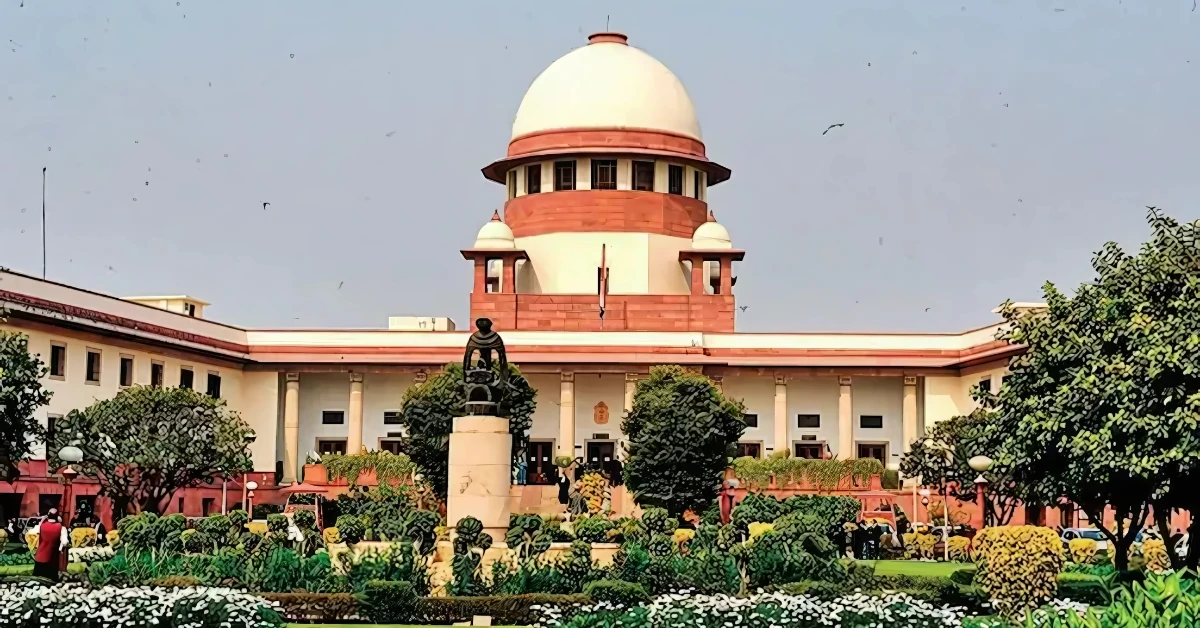Indian Constitution was adopted by the Constituent Assembly of India on 26 November 1949 and officially became effective on 26 January 1950. In this blog, we will see some of the most important amendments to the Indian constitution and its features. Amendments to the Indian Constitution are made according to the needs of the time but the Constitution has remained intact and its basic premises have not changed. Judiciary plays an important role in protecting the Constitution and also in interpreting the Constitution whenever required.
Important Amendments to the Indian Constitution – Part 1
The Indian Constitution has been amended several times to meet the changing needs of the country. This section covers key early amendments that shaped the political and legal framework of modern India.
| Amendment | Year | Features |
| 1st | 1950 | Added restrictions on freedom of speech; inserted Ninth Schedule, Articles 31A and 31B to protect land reform laws. |
| 7th | 1956 | Reorganised states; introduced union territories; established new High Courts. |
| 10th | 1961 | Included Dadra and Nagar Haveli as a Union Territory. |
| 11th | 1961 | Stated that the election of President or Vice-President cannot be challenged due to vacancies in the electoral college. |
| 12th | 1962 | Included Goa, Daman, and Diu as Union Territories; amended Article 240. |
| 13th | 1962 | Formed the state of Nagaland under an agreement with the Naga People’s Convention. |
| 14th | 1962 | Included Pondicherry as a Union Territory; legislature provision for Himachal Pradesh, Manipur, Tripura, and others. |
| 22nd | 1969 | Created the autonomous state of Meghalaya within Assam. |
| 24th | 1971 | Gave Parliament full power to amend any part of the Constitution, including Fundamental Rights. |
| 31st | 1973 | Increased Lok Sabha seats from 500 to 525; reduced UT representation from 25 to 20. |
| 35th | 1974 | Granted Sikkim the status of an associate state of India. |
| 36th | 1975 | Made Sikkim a full-fledged Indian state. |
| 42nd | 1976 | Added the terms ‘Socialist’, ‘Secular’, and ‘Integrity’; introduced Fundamental Duties; made Directive Principles stronger than Fundamental Rights. |
| 44th | 1978 | Removed Right to Property as a fundamental right; added ‘armed rebellion’ as a reason for declaring emergency. |
Important Amendments to the Indian Constitution – Part 2
As India progressed, newer amendments were introduced to address political reforms, statehood demands, reservation policies, and economic changes. This section highlights major amendments from 1985 onwards.
| Amendment | Year | Features |
| 52nd | 1985 | Introduced the anti-defection law to prevent political defections. |
| 53rd | 1986 | Granted full statehood to Mizoram with a minimum of 40 MLAs. |
| 55th | 1986 | Granted statehood to Arunachal Pradesh. |
| 56th | 1987 | Goa became a state; Daman and Diu continued as a Union Territory. |
| 61st | 1989 | Lowered the voting age from 21 years to 18 years. |
| 66th | 1990 | Added various state land reform laws to the Ninth Schedule. |
| 69th | 1991 | Changed Delhi’s name to the National Capital Territory of Delhi. |
| 70th | 1992 | Included elected MLAs of Union Territories in the Presidential election electoral college. |
| 71st | 1992 | Added Konkani, Manipuri, and Nepali to the Eighth Schedule. |
| 73rd | 1993 | Gave constitutional status to Panchayati Raj institutions. |
| 74th | 1993 | Strengthened local governance in urban areas (municipalities). |
| 86th | 2002 | Inserted Article 21A to make free and compulsory education a fundamental right for children aged 6–14. |
| 87th | 2003 | Used 2001 Census for the distribution of parliamentary seats among states. |
| 91st | 2003 | Limited the size of the Council of Ministers to 15% of the total legislature. |
| 92nd | 2003 | Added Bodo, Dogri, Maithili, and Santali to the Eighth Schedule. |
| 94th | 2006 | Proposed a separate Tribal Welfare Minister for Jharkhand and Chhattisgarh. |
| 100th | 2015 | Allowed the exchange of enclaves and territories between India and Bangladesh. |
| 101st | 2017 | Introduced the Goods and Services Tax (GST); added Articles 246A, 269A, and 279A. |
| 102nd | 2018 | Gave constitutional status to the National Commission for Backward Classes. |
| 103rd | 2019 | Provided 10% EWS reservation in education and jobs. |
| 104th | 2020 | Extended SC/ST reservation in legislatures; removed Anglo-Indian reserved seats. |
Check out Courses for All Govt Exams
Important Constitutional Amendments of India – FAQs
Ans. Amendments are formal changes made to the Indian Constitution to meet evolving legal and social needs.
Ans. As of 2025, the Constitution of India has been amended 104 times.
Ans. They allow the Constitution to adapt to new challenges while preserving its core principles.
Ans. They gave constitutional status to Panchayati Raj and urban local bodies, strengthening grassroots democracy.
Ans. The 104th Amendment (2020) extended SC/ST reservation in legislatures and removed Anglo-Indian reserved seats.
- Indian Bank Recruitment 2025 Out for 1500 Apprentice Posts
- Indian Bank Apprentice Salary 2025, Pay Scale, Salary Structure
- Indian Bank Apprentice Syllabus & Exam Pattern 2025, Check Details
- Railway RPF Syllabus 2024, Check Exam Pattern, Topic And Syllabus
- SSC JE vs RRB JE, Which Is Better? Know Detailed Comparison
- SSC CGL Study Plan 2025 For Next 25 Days With Tips, Tricks

Hello, I’m a content writer working at Oliveboard. I focus on creating blogs, articles, and educational content that’s simple, clear, and saves time for readers. I believe in writing that adds real value without overcomplicating things. I also have strong knowledge of banking and government exams, which helps me create content that is both accurate and easy to understand. With experience and consistency, I aim to make preparation smoother for every learner.
